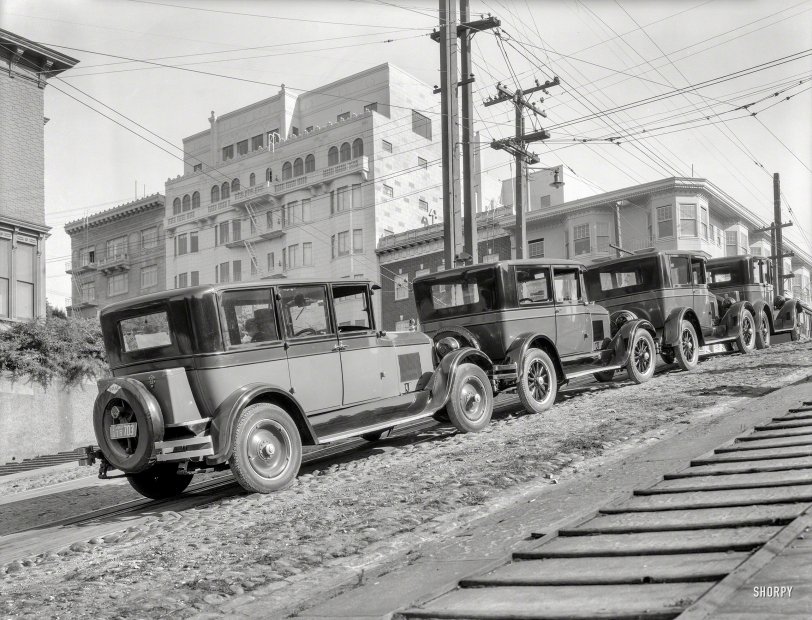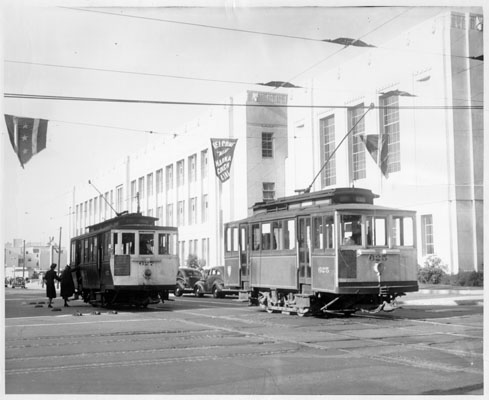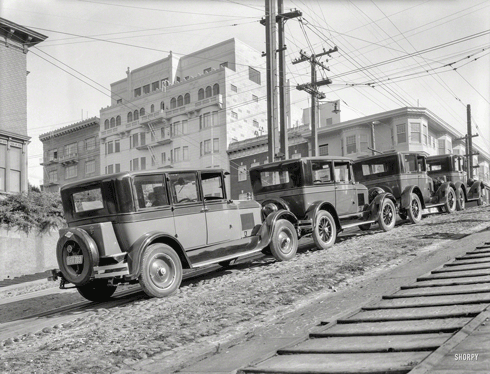


Framed or unframed, desk size to sofa size, printed by us in Arizona and Alabama since 2007. Explore now.
Shorpy is funded by you. Patreon contributors get an ad-free experience.
Learn more.

- Alas, hidden from view
- Exclusive pump
- Details, Details
- What's that building to the left of the tower?
- Coal Barges
- Bromo-Seltzer
- Inner harbor
- The Basin
- What a headache!
- Giant stepladder?
- Baldwin 62303
- Baldwin VO-1000
- Cold
- No expense spared
- Tough Guys
- Lost in Toyland
- And without gloves
- If I were a blindfolded time traveler
- Smoke Consumer Also Cooks
- Oh that stove!
- Possibly still there?
- What?!?
- $100 Reward
- Freeze Frame
- Texas Flyer wanted
- Just a Year Too Soon
- WWII -- Replacing men with women at the railroad crossing.
- Yes, Icing
- You kids drive me nuts!
- NOT An Easy Job
Print Emporium
Paiges on Parade: 1926

"Paiges on Fillmore Hill at Broadway." San Francisco in 1926 is the setting for this latest entry in the Shorpy Pageant of Extinct Conveyances, a passel of parked Paiges. 8x10 film negative by Christopher Helin. View full size.
Time machine?
Hey, why is there a closed circuit camera above the car second from the left! Time traveler shenanigans!
Counterbalanced Street Cars
This stretch of Fillmore Street is so steep that, for many years, San Francisco's Market Street Railway employed counterbalance cars on its #22 line. These streetcars operated as normal electric cars for most of the line, but when they hit the Fillmore grade they hooked onto underground cables to help them up the hill.
But these weren't cable cars. Instead of a powered cables, like on the City's cable car lines, the counterbalance system required another car at the opposite end of the line to be simultaneously hooked onto the cable. Simply put, as one car descended the hill it helped another car ascend.
More info on the Fillmore Counterbalance here.

Re: Traction
Just a minor nitpick, but thne streetcars in San Francisco use underground cables for the motive power, not overhead lines. The cars clasp the underground cables and are towed up the hills and kept from speeding too fast back down.
The overhead lines are most likely power lines for homes and businesses.
[Wrong. See the next comment up. - Dave]
Fillmore Grip
Wasn't this the nickname for some sort of cable haulage for electric cars over a section of track that was too steep for normal traction?
88 years later: Then and Now
I had to do some heavy perspective manipulation on this one, along with compositing another view to get the street somewhat in sync. The compositing is a bit crude, but I just wanted to give the impression of the street. I think it's reasonably effective, considering I can't get the same perspective from the other sidewalk that the original photographer got. (Google Streetview / September 2014.)

Cable or Trolley?
Here's a link to a description of the Fillmore St. counterbalance for electric trolley cars. The modern photo shows that the replacement trackless trolleys (trolley buses) detour around the hill.
Broadway at Fillmore
Except for the one peeking out from the left edge, all these buildings on Broadway are still there. The leftmost has had another floor added. The largest, 2275 Broadway, was built that year.
Traction for Horsepower?
The Paiges drivers semm to have inconsiderately parked their vehicles fouling the cable car line.
But, I want to know what Shorpyists think is the purpose of the cleated roadway to the right of their vehicles.
[It's a sidewalk, a sort of road for pedestrians. The ribs are so you don't slip. On the other side of the street we have stairs. And overhead, power for the streetcars. -Dave]
























On Shorpy:
Today’s Top 5